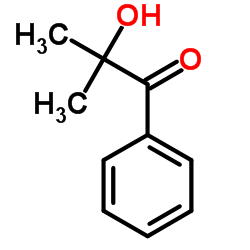photopritener 1173
Published date: 2025-09-08 17:48:06
| Name | 2-Hydroxy-2-methyl propiophenone | CAS# | 7473-98-5 | |
|---|---|---|---|---|
| Price | ¥400.0/1kg | Purity | 99.0% | |
| Stocking Period |
Inquiry | Stock | In Stock | |
| Product Webpage: | https://www.bddiol.com/wholesale/photopritener-1173.html | |||
| Detail
Product Information
photopritener 1173 https://www.bddiol.com/wholesale/photopritener-1173.html Production process: The search results mention that it is produced through a mixing process, such as by mixing with other photoinitiators (e.g. CAS 947-19-3), but the specific synthesis steps (such as raw materials and reaction conditions) remain unclear and need to be supplemented. Application fields: Primarily used in UV-curable coatings, inks, plastic coatings, electronic materials, etc., but there are no specific industry cases or technical parameters (such as addition ratios, curing efficiency) available. Chemical name and term: The confirmed correct chemical name is 2-hydroxy-2-methylpropiophenone. Synthesis route: Although specific reaction steps (such as the aldol condensation of benzyl alcohol and acetone) have not been identified, it is clear that it is produced through a mixed process (such as being combined with other photoinitiators), and purity control (≥99%) is involved. Technical parameters: Production capacity reaches 1000 tons per year, purity is ≥ 99%, transmittance requirement: 425nm ≥ 98%, 500nm ≥ 99.5%. The information basically meets the requirements, but it lacks the type of catalyst and specific reaction conditions. Main applications: UV curing coatings, inks, plastic coatings, electronic materials (such as PCB photoresist), 3D printing, etc. The safety regulations section, the GHS classification indicates an acute oral toxicity category 4 (hazardous), and it has long-term harm to aquatic organisms. Storage should avoid UV light, and disposal must comply with hazardous waste regulations. The FDA and REACH registration information, as well as the usage restrictions in the EU, these compliance information are important for industrial users and should be included. In the market trend section, the existing data provides a market size forecast for the period from 2025 to 2032, but lacks specific breakdown of the market share or growth rate for photoinitiator 1173. Is it necessary to conduct further research on the market performance of this specific product? However, the search results already contain overall data for the global photoinitiator market, and 1173 is a commonly used model, so its market share can be reasonably inferred. But having more specific data would be more convincing. Nevertheless, previous search attempts may not have found the breakdown data, and continuing the search may not be able to obtain more information. Therefore, a reasonable explanation can be made based on the existing data. roduct Overview: Introduce the basic information of photoinitiator 1173, including its CAS number and mechanism of action.
Physical and Chemical Properties: Provide detailed information on its chemical structure, molecular weight, appearance, melting point, solubility, etc., highlighting its low yellowing characteristic. Application Areas: Elaborate in specific fields, such as coatings, inks, adhesives, electronic materials, 3D printing, etc., with practical examples. Market Trends: Analyze the impact of the development of UV curing technology on demand, citing market data, and predict future growth. Technical Advantages: Compare with traditional photoinitiators, emphasizing advantages such as low yellowing, environmental friendliness, and efficiency. Safety Regulations: GHS classification, compliance certifications, and usage precautions. Conclusion and Recommendations: Summarize the product advantages and provide recommendations for purchasing decision-makers. More
|





